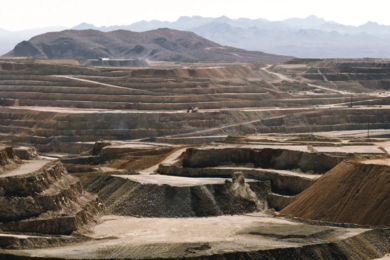A modelling scheme carried out by Concept Economics, an economic analysis group, shows that 23,510 direct jobs will be lost across Australia’s minerals industry by 2020 and 66,480 by 2030 as a result of the Federal Government’s Carbon Pollution Reduction Scheme (CPRS). The 2020 figure represents an 11% drop in overall employment in the minerals sector, while the 2030 result is a 24% decrease. The report, The employment effects in the Australian Mineral Industry from the proposed Carbon Pollution Reduction Scheme in Australia, was conducted by Dr Brian Fisher, the former Executive Director of the Australian Bureau of Agricultural and Resource Economics. It is the first detailed analysis of the impact of the emissions scheme on employment in the Australian minerals sector.
“The proposed CPRS is out of step with global efforts to reduce emissions, other international trading schemes and the development of the low emissions technologies needed to reduce emissions. It will impose the highest carbon costs in the world on Australia’s minerals exporters,” Minerals Council of Australia (MCA) Chief Executive Officer Mitchell Hooke said.
“We share the Government’s commitment to reducing emissions, but this modelling shows the CPRS is fundamentally flawed. By imposing the highest carbon costs in the world on Australia’s minerals exporters, it will eliminate jobs while failing to materially reduce global greenhouse gas levels. One simple change to the CPRS would deliver a cap-and-trade emissions reductions scheme without the job destroying impact of the current design. It should include a phased approach to emissions trading – with the number of carbon permits auctioned increasing over time,” Hooke continued.
“Such a simple change would deliver a scheme with good outcomes for the environment and save thousands of jobs. Other schemes around the world have adopted a phased approach – it is hard to understand why it has been ruled out in Australia.”
The modelling has calculated the following job losses by state:
- Queensland – 11,440 (2020), 34,090 (2030)
- New South Wales – 4,260 (2020), 14,600 (2030)
- Western Australia – 3,410 (2020), 5,750 (2030)
- South Australia – 1,990 (2020), 3,150 (2030)
- Tasmania – 1,050 (2020), 2,520 (2030)
- Victoria – 1,210 (2020), 5,830 (2030)
- Northern Territory – 150 (2020), 540 (2030).
Job losses by commodity and sector:
- Coal – 9,040 (2020), 15,610 (2030)
- Gas – 870 (2020), 1,730 (2030)
- Bauxite – 40 (2020), 600 (2030)
- Other non-ferrous metal ore mining (including gold/copper/lead/zinc) – 1,720 (2020), 5,290 (2030)
- Iron ore – 560 (2020), 1,740 (2030)
- Other mining -1,130 (2020), 3,240 (2030)
- Mining services – 1,580 (2020), 4,600 (2030)
- Smelting and refining sector – 8,570 (2020), 33,670 (2030).
The MCA states that the recent changes to the CPRS have not fixed the fundamental flaws in the scheme.
“The one year delay represents a stay of execution for the jobs that will be shed under the proposed scheme. The simple message of this report is that the CPRS as it is currently designed will result in a transfer of exports from Australia to our international competitors. That will not produce any appreciable reduction in global emissions,” Hooke said.









